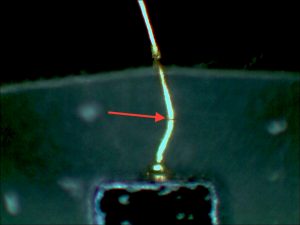A client provided several resistors to SEM Lab, Inc. for SEM/EDS analysis. The client reported seeing “yellowing” of the metallization after solder reflow on some components, most notably 0603 resistors. We examined both discolored (post reflow) and stock parts (control).



Sungil Cho et al [1] studied oxidation kinetics for lead-free alloys and reported that silver modifies the oxidation rate of tin (i.e. promote the formation of tin oxides). It seems likely that the yellowing is related to thick oxide formation due to combination of factors including (1) excessive time-temperature exposure (2) silver availability from the silver-thick-film in the resistor and/or the silver in the SAC alloy.
Resistor manufacturers offer designs that are improved with respect to exposure of the silver-thick-film in the resistor to corrosion (usually by sulfur), e.g. Thick Film Chip Resistors, Military/Established Reliability MIL-PRF-55342 Qualified, Type RM. It was suggested that the client obtain some of the Type RM resistors and determine if they are also more immune to yellowing during reflow on this assembly.
[1] Sungil Cho et al, “The Oxidation of Lead-Free Sn Alloys by Electrochemical Reduction Analysis”, Journal of Metals, June 2005, pp. 50 – 52.
Check out SEM Lab, Inc. to learn more.


































